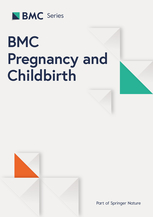
Geert Molenberghs, Christel Faes, Johan Verbeeck, Patrick Deboosere, et al.
Eurosurveillance, Volume 27, Issue 7, 17. February 2022.
Introduction
Belgium’s coronavirus disease (COVID-19)-related mortality per million inhabitants has been reported as the highest worldwide (excluding microstates) between 11 April 2020 and 26 August 2020. For example, on 28 June 2020 Our World in Data [1] reported that Belgium had 830 COVID-19-related deaths per million population (DPM) vs 107 in Germany, 379 in the United States (US), 456 in France, 539 in Sweden, 574 in Italy and 593 in the United Kingdom (UK). Because of its relative nature, DPM appears to be an objective measure for comparison. However, it heavily depends on many factors, including but not limited to population density and the completeness of reporting on COVID-19 mortality [2]. During the first half year of 2020, the east coast of the US was primarily affected by COVID-19, resulting in a relatively low DPM for the entire US as compared to other countries. The high death toll observed on the east coast was diluted by the largely unaffected west coast population in the first half of the year. Indeed, in New York State until the end of June 2020, the DPM was 1,599, largely exceeding the Belgian DPM for this period [3]. The completeness of COVID-19-related mortality reporting itself also depends on many factors such as directives, availability of data and the definition of a COVID-19-related death. Belgium is one of the few countries whose COVID-19-related mortality notification criteria is broader than the WHO criteria [4] and includes laboratory and radiologically-confirmed COVID-19 deaths in hospital, nursing homes or other long-term care facilities as well as deaths in possible COVID-19 cases [5,6].
The case fatality ratio (CFR), another frequently reported measure regarding COVID-19-related mortality, is arguably also not a good basis for international comparison [7,8]. Besides its dependence on the accuracy of COVID-19-related mortality reporting, it is strongly influenced by testing strategies. Additionally, in some instances, the delay between case confirmation and death is not accounted for [9] and age dependency is ignored. The handling of suspected COVID-19 cases is ambiguous at best. However, the CFR can be useful as a tool to estimate global infection fatality ratio (IFR) [10], when the IFR is derived as a limit of the CFR by asymptotic models.
It is difficult to compare COVID-19 mortality in Belgium to countries that have a less extensive reporting strategy, in particular when the gap between excess mortality and COVID-19 mortality is large, such as in the Netherlands, Italy, or Austria [3]. Arguably, excess mortality is a better basis for international comparison [2,11].
To understand the subtleties of COVID-19 mortality in Belgium, we examined COVID-19-related mortality, placing it against the background of excess mortality in Belgium, and compared the COVID-19 DPM and IFR between countries and within subgroups in Belgium. Using the number of COVID-19 deaths, COVID-19 hospitalisations and seroprevalence estimates based on serial serological surveys [12], COVID-19 DPM and IFR were estimated overall and in relation to age and sex, and for the general population as a whole, the nursing home population (NHP) and the non-NHP, which excludes a small but very frail segment of the population, separately.
Read the full ariticle in Eurosurveillance.



